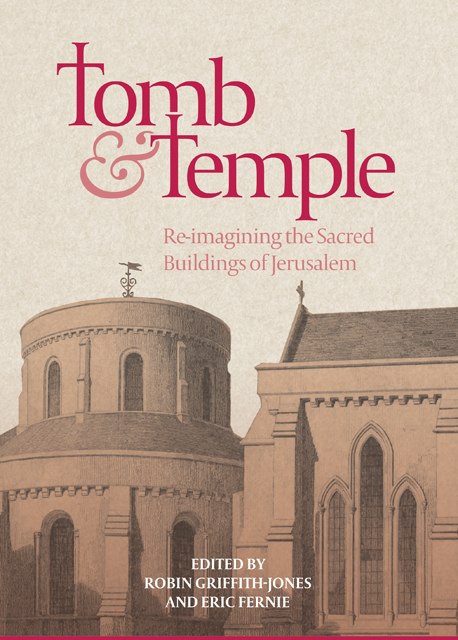Book contents
- Frontmatter
- Contents
- Illustrations
- Preface
- Contributors
- Abbreviations
- Editors’ Note
- Introduction
- Part I Re-presenting Jerusalem
- Part II The Church of the Holy Sepulchre
- Part III The Noble Sanctuary / The Temple Mount
- Part IV The Orthodox Churches
- Part V Round Churches in the West
- Appendix: The Knights’ Effigies: Newly Discovered Drawings by John Guillim, c. 1610
- Epilogue
- Index
- Already Published
20 - Jerusalem in London: The New Temple Church Appendix: The Indulgences of Cotton Nero E.VI
Published online by Cambridge University Press: 17 January 2023
- Frontmatter
- Contents
- Illustrations
- Preface
- Contributors
- Abbreviations
- Editors’ Note
- Introduction
- Part I Re-presenting Jerusalem
- Part II The Church of the Holy Sepulchre
- Part III The Noble Sanctuary / The Temple Mount
- Part IV The Orthodox Churches
- Part V Round Churches in the West
- Appendix: The Knights’ Effigies: Newly Discovered Drawings by John Guillim, c. 1610
- Epilogue
- Index
- Already Published
Summary
Between c. 1145 and 1275, twenty-one visitation indulgences were issued in support of the Temple Church in London. Historians have referenced these indulgences in passing, but no one has yet examined the corpus of pardons as a whole to determine what it reveals about the Templar Order in England. The highly formulaic vocabulary of the charters, along with the growing ubiquity of pardons in England in the twelfth and thirteenth centuries, has likely contributed to this oversight. I will demonstrate in this chapter that the indulgences provide new and important information on the Templar Order in London, particularly in regard to their building campaigns at the New Temple. The Templars, through their invocation of their association with the Holy Sepulchre, aimed to provide for medieval Christians an alternative Jerusalem in London.
After papal recognition of the Templars at the Council of Troyes in 1129, the earliest examples of solicitation of financial support for the Order were associated with papal indulgences. In Milites dei (1144), Pope Celestine II commanded the clergy to urge all Christians to support the Templars financially in return for remission of one-seventh of their enjoined penance. The crusader state of Edessa fell to the Muslims on Christmas Eve that same year, and Pope Eugene III reissued the indulgence in July 1145, followed by his formal crusade encyclical, Quantum predecessores, on 1 December 1145. The first visitation indulgence in support of a specific Templar site in England appeared shortly thereafter. Between c. 1145 and 1161, Theobald of Bec, archbishop of Canterbury, promised twenty days’ remission from enjoined penance to all who visited the Old Temple church in London on the anniversary of its dedication and gave alms in remission of their sins. Theobald cited financial provision as his reason for issuing the indulgence, which suggests that he was responding to the papal bulls of 1144 and 1145. Furthermore, the recent establishment of the headquarters at the Old Temple in London (c. 1140–44) would have stimulated interest in supporting the new site.
Theobald was serving as papal legate when he issued the pardon and, although his formal legation began in 1150 and lasted until his death in 1161, he was often employed as papal legate earlier than 1150.
- Type
- Chapter
- Information
- Tomb and TempleRe-imagining the Sacred Buildings of Jerusalem, pp. 387 - 412Publisher: Boydell & BrewerPrint publication year: 2018
- 1
- Cited by

